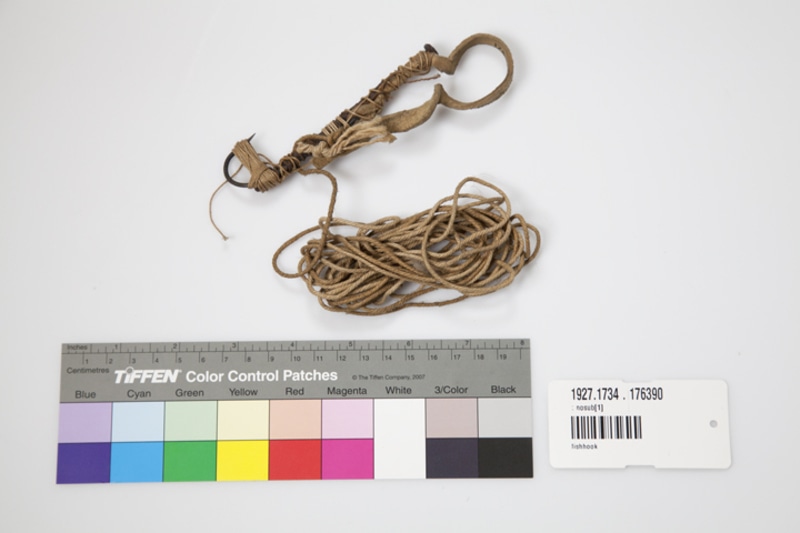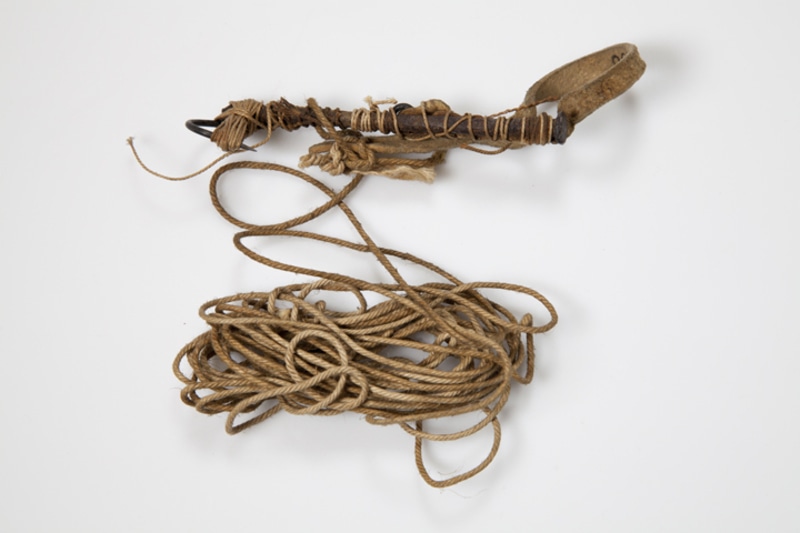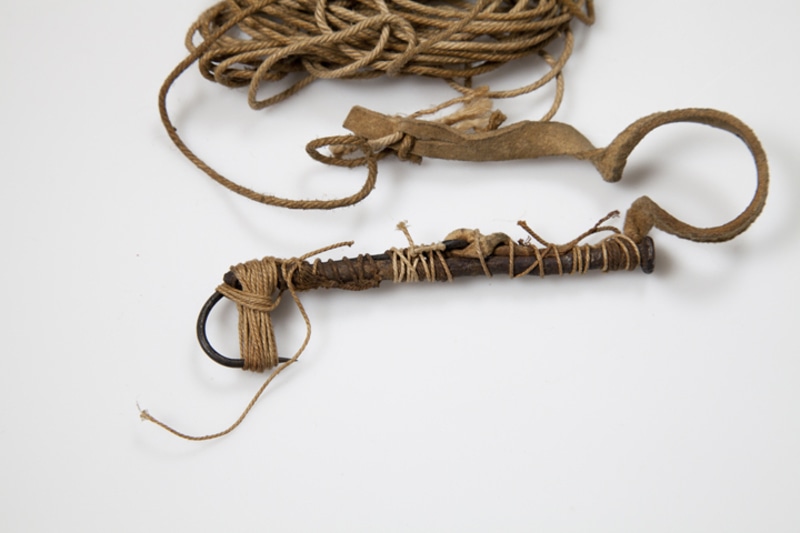fishhook Item Number: 1927.1734 . 176390 from the The Field Museum




Citations From Vanstone (1982) Article
« Fishing equipment in the Speck collection includes seven fish hooks, five of which have wooden shanks and bone points.
Vanstone, James W. "The Speck Collection of Montagnais Material Culture from the Lower St. Lawrence Drainage, Quebec." Fieldiana. Anthropology. New Series, No. 5 (October 29, 1982), p.6.
« Two metal fish hooks are also composite in design. Large commercial steel hooks are lashed to iron spikes with heavy twine. Lighter twine binds the point of the hook to the distal end of the shank. At the proximal ends of both specimens are leaders consisting of short strips of moose hide to which are attached lengths of two-ply twine fish line (fig. 3b). »
Vanstone, James W. "The Speck Collection of Montagnais Material Culture from the Lower St. Lawrence Drainage, Quebec." Fieldiana. Anthropology. New Series, No. 5 (October 29, 1982), p.6, fig 3b (p.31).
« Hooks of both types were baited with minnows and used with set lines. Muskellunge, pike, and other large fish swallowed the hook which then caught in the stomach rather than in the mouth or gills. Fish hooks with wooden shanks were used by the neighboring Mistassini and are described and illustrated by Rogers (1967, p. 88, pi. XIV-A). » Ibis.
Translation Of Citations From Vanstone (1982) Article
« L’équipement de pêche de Speck de la collection inclut sept hameçons à poisson , dont cinq comportent des pointes en os et des jarrets de bois. »
Vanstone, James W. "The Speck Collection of Montagnais Material Culture from the Lower St. Lawrence Drainage, Quebec." Fieldiana. Anthropology. New Series, No. 5 (October 29, 1982), p.6.
« Deux hameçons en métal sont aussi fabriqués de plusieurs pièces. De larges hameçons commerciaux sont attachés aux pointes en fer avec du fil robuste. Du fil plus fin relie la pointe du crochet à l’extrémité distale de la tige. L’on retrouve aux extrémités proximales des deux échantillons des bas de ligne faits de courtes bandes de peau d’orignal, auxquelles sont attachées des longueurs de deux épaisseurs de ligne à pêche (fig 3b). »
Vanstone, James W. "The Speck Collection of Montagnais Material Culture from the Lower St. Lawrence Drainage, Quebec." Fieldiana. Anthropology. New Series, No. 5 (October 29, 1982), p.6, fig 3b (p.31).
« Les hameçons des deux types étaient utilisés avec des ménés comme appâts et des lignes fixes. Maskinongés, brochets et autres gros poissons avalaient l’hameçon qui restait alors prit dans l’estomac plutôt que dans la bouche ou les branchies. Les hameçons fait de jarrets de bois était utilisé par les voisins de Mistassini et sont décrits et illustrés par Rogers (1967, p. 88, pi. XIV-A). » Ibis
Item History
- Made in Pekuakami, Lac Saint-Jean, Lake St. John, Labrador, Canada
What
- Name
- fishhook
- Identification Number
- 1927.1734 . 176390
- Type of Item
- fishhook
- Material
- “iron nail; thong” ?
Who
- Culture
- Ilnu, Montagnais and Innu
Where
- Holding Institution
- The Field Museum
- Made in
- Pekuakami, Lac Saint-Jean, Lake St. John, Labrador, Canada
Other
- Nom De L'objet
- Hameçon à poisson
- Matériaux
- clou en fer; lanière
- Ethnic Group
- Montagnais
- Collection
- Lake St. John Objects
- Provenience
- North America, Canada, Quebec, Labrador, Lake St. John